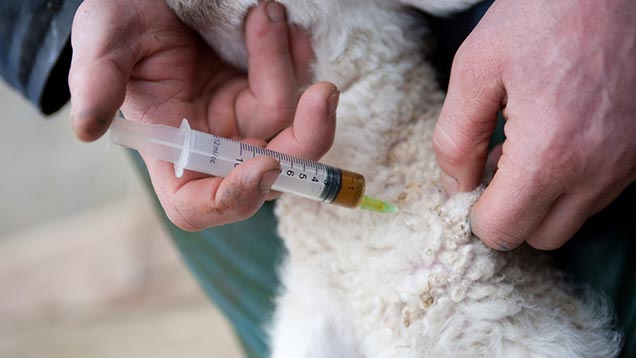Vet viewpoint: Take a proactive approach to antibiotic use
 ©Tim Scrivener
©Tim Scrivener A regional monthly round-up of key veterinary issues from members of the XL Vets group.
Hannah Fletcher, Midshire Farm and Equine, Warwickshire
The warmer autumn has caused cattle to be housed later than usual and, so far, fewer cases of pneumonia have been seen.
Many farms are using vaccines prior to housing and weaning as a routine preventative measure to reduce overall drug costs, deaths, and liveweight losses associated with the disease.
Liver fluke is still catching out some cattle farmers who have never experienced the problem before. Abattoir reports confirming damaged livers highlight the need to use fluke control on these farms.
See also: Action plan to tackle disease affecting one-third of dairy herds
Treatments containing triclabendazole will kill all stages of the parasite, however, many combination worm and fluke products or injectable treatments do not kill the early stages.
Ideally, triclabendazole should be used at housing, but if an alternative flukicide is used, additional treatment will be required prior to spring turnout to kill any remaining fluke.
Iain MacLean, DS McGregor & Partners, Caithness
Winter is here, with darker nights, stronger winds and the days wetter and colder.
The season has changed and we know what to expect. Key to managing this has always been advanced preparation.
We held a farm open day in September, where we discussed “Preparing for Winter Success”.
Many farmers who attended were already well versed in the art and science of rearing stock, yet there was an enthusiasm for new ideas as well as getting a refresher.
Draughts, damp and high ammonia are all issues with housed calves that contribute to pneumonia.
Ensuring drains work and water bowls are not overflowing are effective preventative measures that cost nothing.
Draughts should be checked at calf level, and although smoke bombs are ideal, a bit of straw under an upturned bucket is still useful.
No one ventilation system can cope will all weathers, so this should be a regular check.
Matthew Berriman, Rosevean Veterinary Practice, Cornwall
Many herds are just at the start of their mating period.
Heat detection is a vital part of getting these cows back in-calf as quickly as possible.
The higher the submission rate, the more cows will get pregnant during the mating period. Submission rates of more than 80% are achievable.
Regular observation of cows, correct use of heat detection aids, staff training on recognition of bulling behaviour and milk progesterone testing are all things that will help increase submission rates.
Using a synchronisation programme can also help by ensuring that a group of cows has a submission rate of 100%.
This increases the pregnancy rate in these cows, compared to natural heat detection.
Many herds find the cost of the programme is more than justified by the increased number of pregnancies and reduction in calving interval it achieves.
Richard Davies, Fenton Veterinary Practice, Pembrokeshire
Hardly a day goes by without an article about antimicrobial resistance in the veterinary or farming press.
While it may be thought of as a problem in human medicine or intensive farming, we all have a role to play.
Cattle and sheep farmers have been largely unaffected, but now is a prudent time to have a proactive approach to antimicrobial usage on farm.
The two main points to consider are which antibiotics are used and whether they are used for treatment or prevention.
The Responsible Use of Medicines in Agriculture alliance make a valid point that we should not routinely use antibiotics for prevention of diseases, if that disease challenge can be controlled by better husbandry and management.
Have a word with your vet about which antibiotics to use as a first line of treatment, and how changes of husbandry, management or housing could reduce the amount used on your farm.
